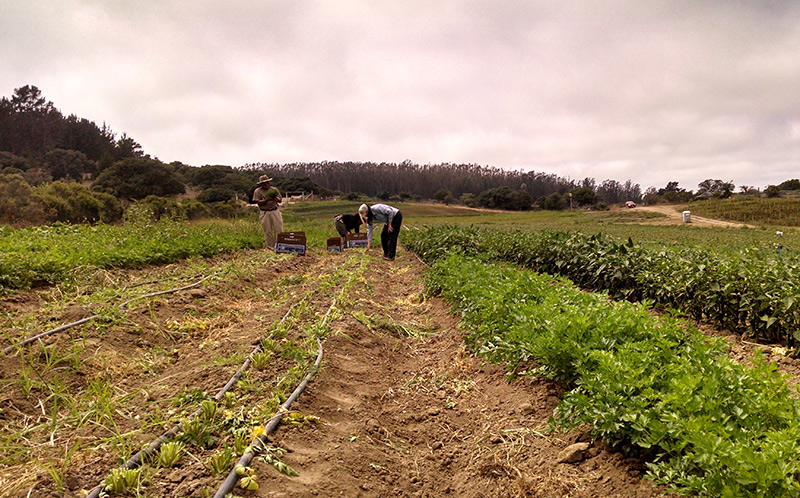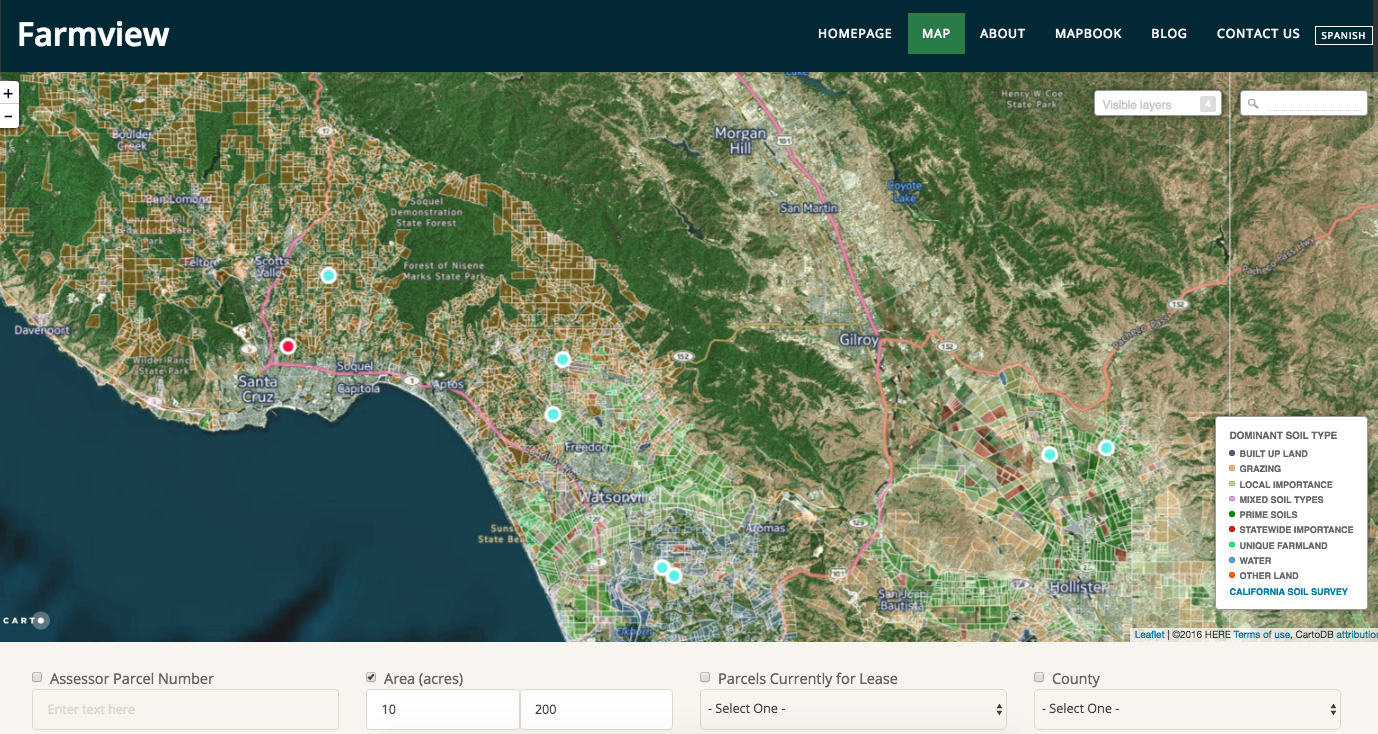Leveraging Distributed Data Collection Methods For A More Democratic Agricultural Policy

Harvesting organic parsley near Watsonville, CA.
We are delighted to share with you this blog post written by Ona Impact Grantee, Adam Calo. Adam is a Ph.D. candidate at the University of California, Berkeley who is doing great work using Ona in his Farmland Monitoring Project. In his guest post, Adam tells us about his project and the data collection process with Ona.
In my early university days, I trained as a field ecologist. I long had the idea that emerging information technologies could make data collection more impactful and be used to help farmers better understand the ecology of their farms. However, during my Ph.D. program at UC Berkeley’s Department of Environmental Science, Policy, and Management, I came to realize that the crucial barriers farmers faced were not technical, but rather political. Understanding the ecology of their farms was never really a problem. Their decisions were constrained instead by the agricultural policies embedded in the California landscape. It was their autonomy as a tenant farmer, their inability to access loans or reliable markets, and the dearth of quality land available for their agricultural pursuits that impacted their decisions. All of this led me to think about how tools that facilitate bottom-up data collection and information sharing could be applied to more socio-ecological systems, like smallholder agriculture.
In collaboration with local partners in the central coast of California, ALBA and California Farmlink, the Farmland Monitoring Project was devised. We sought to create a place where farmers and farm advocates can submit information about land quality and ownership to a shared database and make it possible to view the results publically in combination with agriculturally-relevant public records. Tenant farming is the new norm, so information on the dynamic interplay of rental availability, land ownership, and soil quality would better prepare a farmer for a new lease arrangement. Access to quality, affordable land with co-location to markets and lease arrangements is a critical barrier affecting even the most highly skilled organic agriculturalists.
To start, we needed an efficient way to collect and manage data. Ona provides tools for survey creation, data collection, and data visualization, and its ability to support multiple devices, multiple languages, and submission aggregation made Ona the ideal fit for the project. Usually, researchers with minimal or no grant funding are often locked out of accessing advanced data tools simply because they can’t afford them. As we had received a small seed grant from the Berkeley Food Institute, we reached out to Ona and applied for an Impact Grant through which we gained free access to the Ona platform and all its advanced features. My colleague at the UC Berkeley School of Information, Seongtaek Lim, developed a webGIS application that accepts submissions from Ona so that farmers can access the information via a public website. Our development team also customized a tool that could remotely download, geoprocess and sync current submissions to the webGIS tool. Access to the Ona API was critical to the project. We defined a simple data process where the Ona dashboard operates as a ‘staging area’ before we publish the data via the mapping tool. During this staging process, we are able to edit submissions and track usage through Ona’s dashboards.
 Interacting with land ownership data on the custom web GIS.
Interacting with land ownership data on the custom web GIS.
We have reached a community of over 300 smallholder farmers who submit data via Enketo through their mobile phone or web browser. A portion of the farmers in the greater California central coast are accessing the aggregated data via our custom mapping application. Previously, agricultural investors and large agribusinesses used costly geospatial services to find out details on land ownership and quality. As a result of this project, farmers are now contributing to their own database of land availability, and small farm advocates are leveraging this information to match good land with prospective farmers.
“We’ve been really satisfied with using Ona for our purposes of distributed data collection.”
Finn Danielsen spent decades advocating for programs that support non-expert data collection of natural resources. He argues that when community groups are supported in monitoring resources important to them, they take more initiative to steward the resource. It might be these effects of bottom-up data collection that are the most meaningful outcomes of the endeavors that tools like Ona support.
The Farmland Monitoring Project is a transdisciplinary research initiative of UC Berkeley. Generous support comes from the Berkeley Food Institute, the Center for Information Technology Research in the Interest of Society, and UC Cooperative Extension. Oversight, feedback, and expertise come from the farmers and staff of the Agriculture and Land Based Training Association, and California Farmlink. Research guidance, mentoring, and technical assistance was provided by colleagues at Represent.org. Seongtaek Lim provided the heavy development lifting for the project as well as a dedicated team of contributors.
Apply for a grant today by visiting our Impact Grants page.

